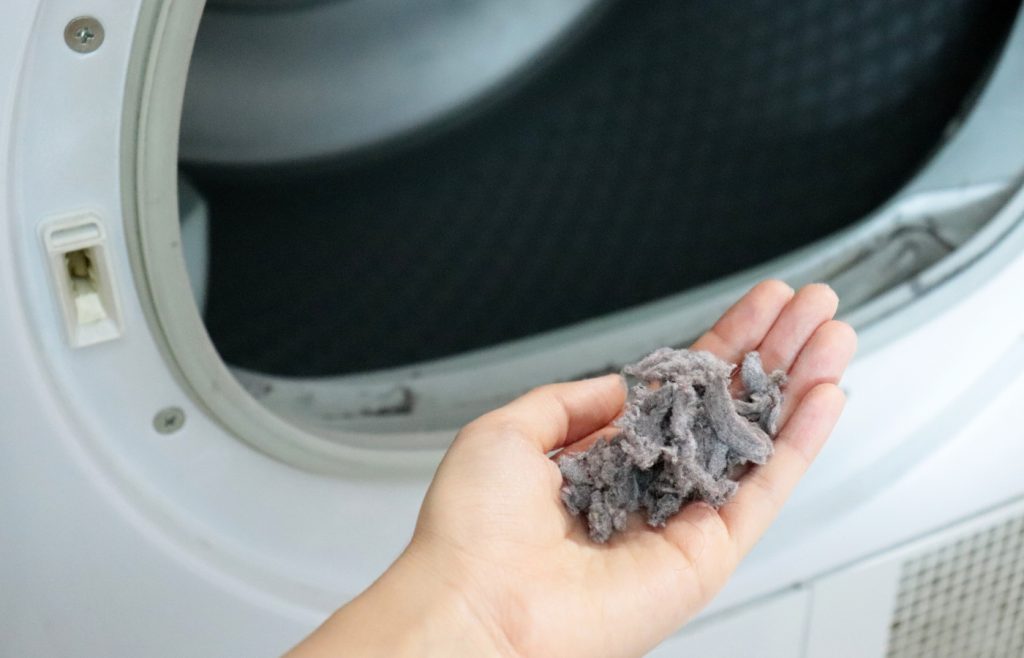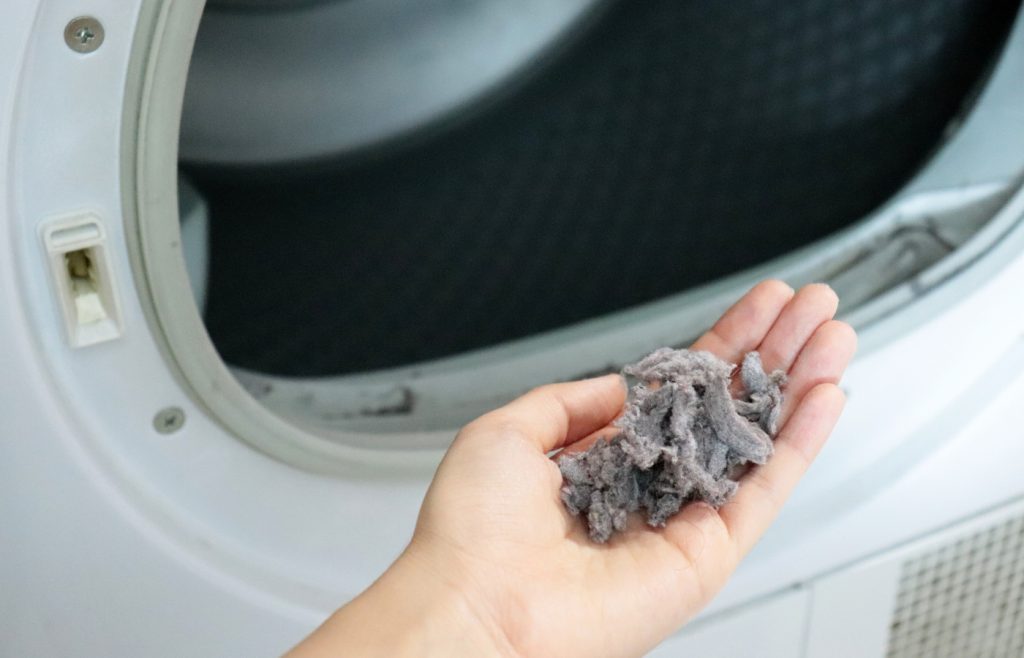The dryer is an essential appliance that simplifies daily life, but regular maintenance is crucial to ensure optimal performance and extend its lifespan.
A clean and well-maintained appliance consumes less energy, dries clothes faster, and protects your garments. Whether you own a condenser model or a heat pump dryer, these tips apply to all types of dryers.
Proper maintenance also prevents expensive breakdowns and ensures safe operation. By adopting simple yet regular habits, you can optimize your appliance’s performance and prolong its lifespan. Here’s a practical guide for thorough and effective cleaning.
Clean the lint filter after each use
The lint filter is a crucial component of the dryer, as it collects all the fibers and lint from the laundry. After each cycle, gently remove the lint either by hand or with a soft brush. This simple step ensures good air circulation in the appliance, which is essential for quick and efficient drying.
Once a month, it’s advisable to clean the filter more thoroughly. Rinse it under warm water with a bit of soap to remove detergent residues and lint that might clog the system. Allow it to dry completely before reinserting. You can also find clever ways to reuse the lint from your dryer.
A clean filter not only optimizes the appliance’s performance but also reduces the risks of overheating.

Maintain the exhaust ducts for better efficiency
The exhaust ducts play a vital role in expelling hot, humid air. Over time, lint and dust can accumulate, reducing the appliance’s efficiency and increasing its energy consumption. Cleaning the exhaust ducts biannually is essential for optimal operation.
To do this, use a vacuum cleaner with a long attachment to reach difficult areas. If your dryer has an external exhaust hose, detach it for a more thorough cleaning with clear water.
Also, check the condition of the hose and replace it if it shows signs of wear. A clean duct allows your dryer to function at full capacity while reducing the fire risks associated with accumulated lint.
Clean the condenser to preserve energy efficiency
The condenser, found in condenser models, should be maintained every three months to ensure optimal performance. Carefully remove it, following the manufacturer’s instructions, and rinse it under running water. This cleaning eliminates lint buildup and improves the appliance’s ability to condense moisture extracted from laundry.
Ensure that the condenser is completely dry before reinstalling it in the appliance. A clean condenser reduces drying time, saving energy and protecting your textiles.
This regular maintenance is especially important to prevent the buildup of dirt that could impair the dryer’s operation.
Maintain the humidity sensors and door seal
The humidity sensors, often located inside the drum, automatically adjust the cycle duration based on the laundry’s condition. To ensure their accuracy, clean them once a month with a slightly damp soft cloth. Avoid abrasive chemical products that could damage these essential components.
The door seal should also be inspected and cleaned weekly. Use a damp cloth to remove detergent residue, lint, or other impurities. A clean seal ensures a perfect airtight fit, which is essential for maintaining heat within the drum.
An airtight door also contributes to quick and efficient drying while preventing energy loss.
Create an appropriate environment for your dryer
The location of your dryer plays a crucial role in its efficiency. Place it in a well-ventilated room with enough space around it to allow for good air circulation.
A stable ambient temperature is also important; extremely cold or humid environments can slow down drying and increase energy consumption.
Regularly clean the air vents located at the back or sides of the appliance. Effective ventilation reduces the risk of overheating and improves the dryer’s lifespan. Avoid installing your appliance in a cramped or poorly ventilated space that could harm its performance.

